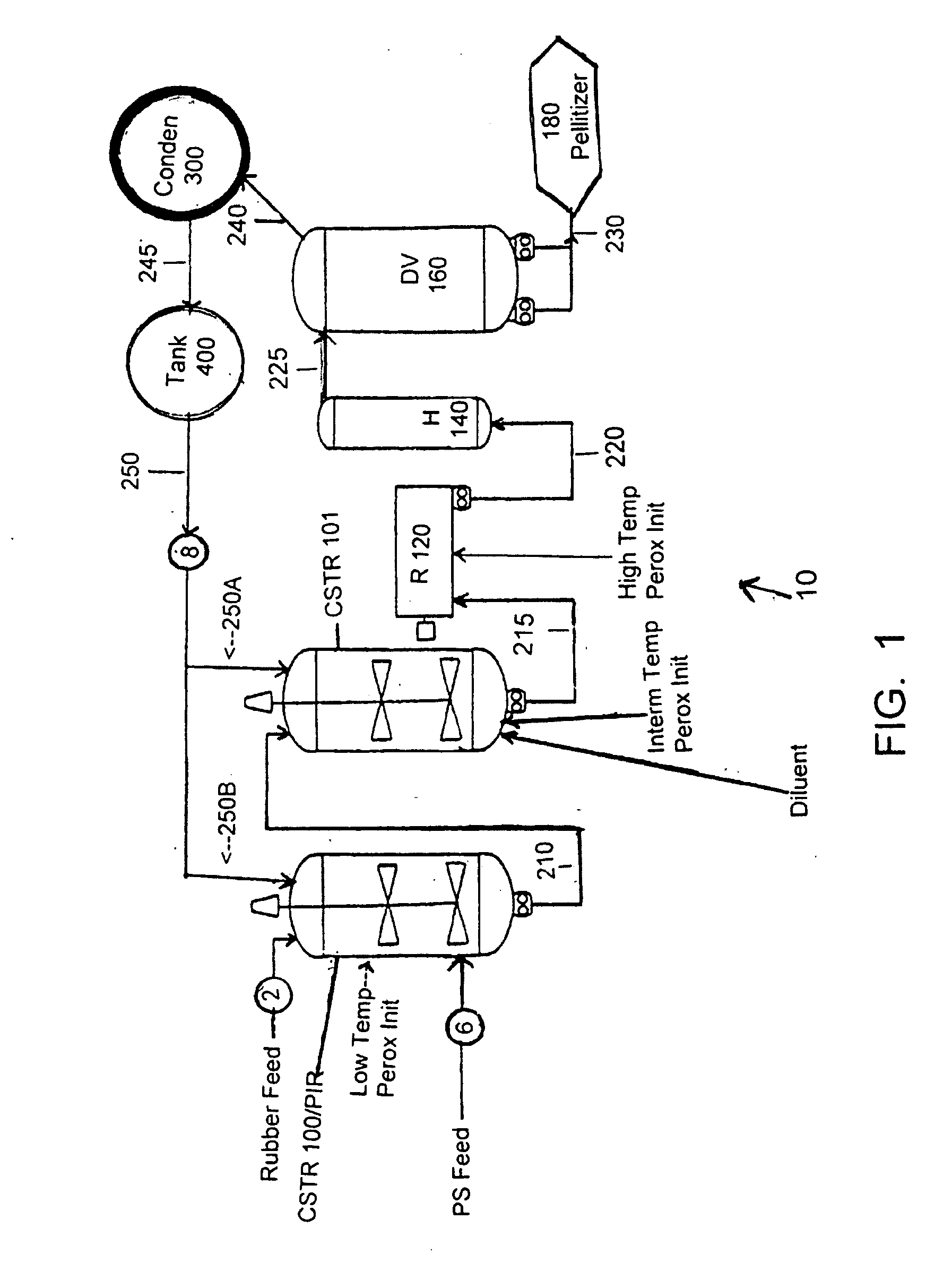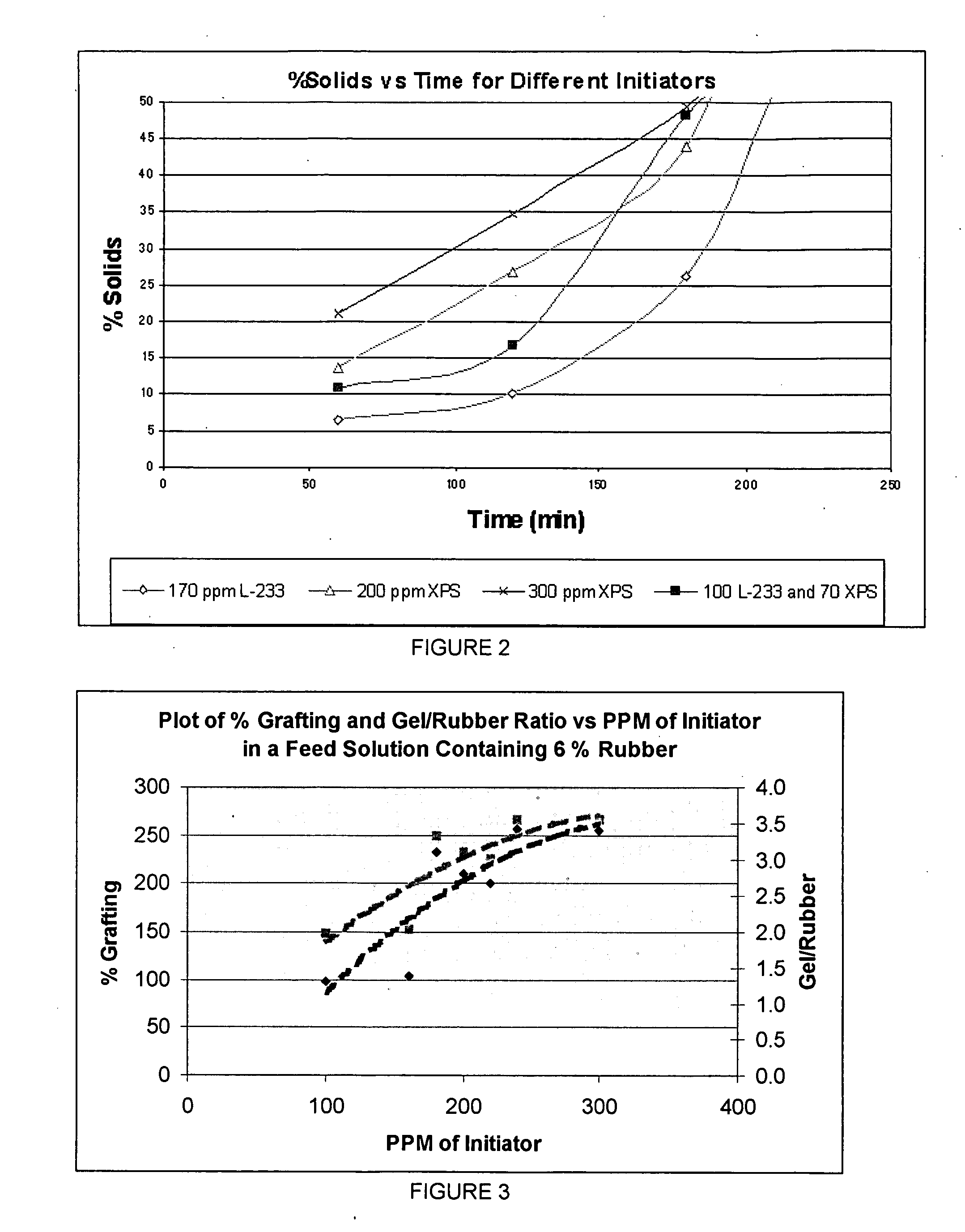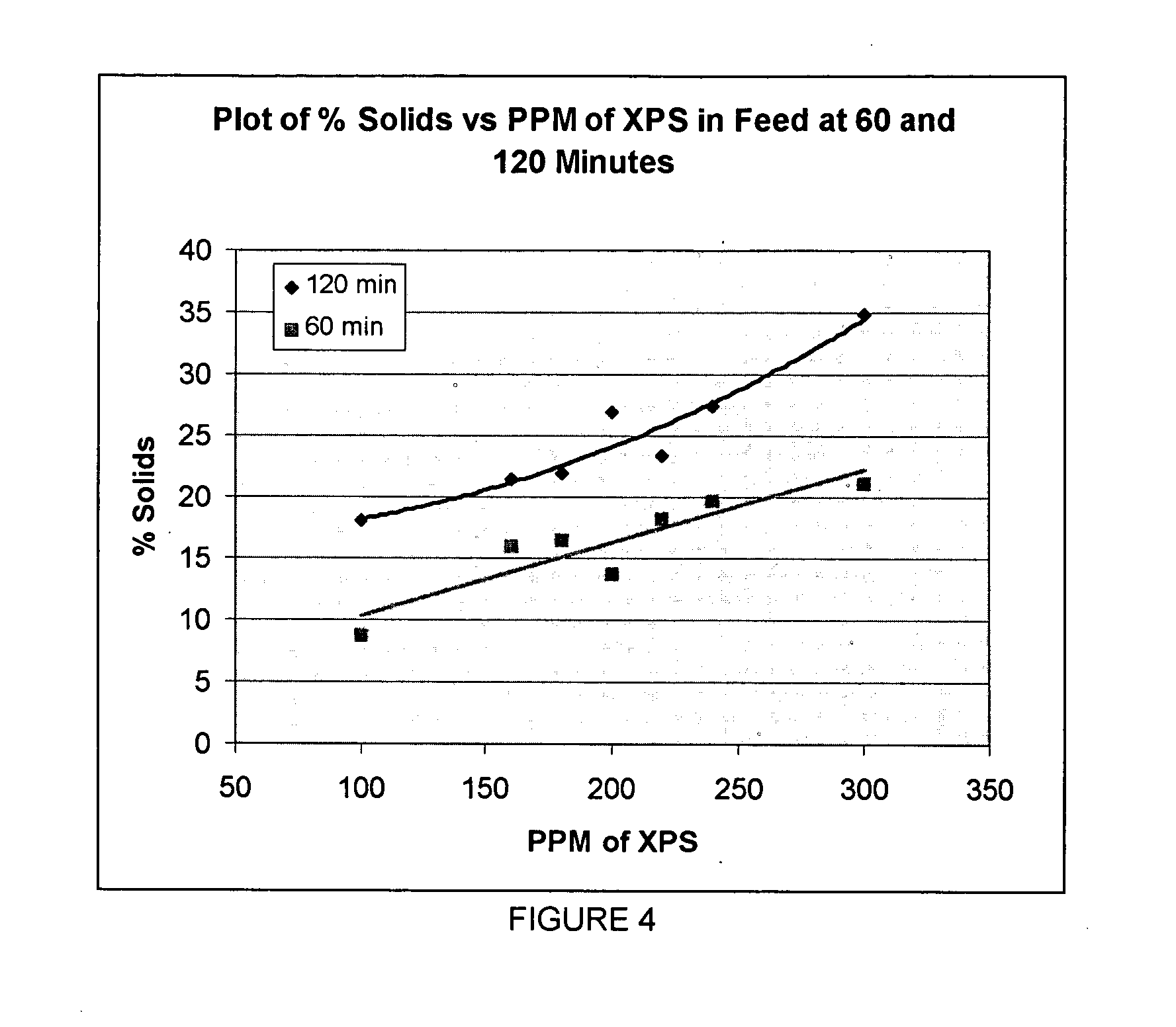Low temperature initiators for improving the rubber phase volume of HIPS formulations
a technology of initiators and hips, which is applied in the field of low temperature initiators for improving the rubber phase volume of hips formulations, can solve problems such as not being optimized, and achieve the effect of high impa
- Summary
- Abstract
- Description
- Claims
- Application Information
AI Technical Summary
Benefits of technology
Problems solved by technology
Method used
Image
Examples
example 1
[0116] For this study, the reactivity of initiator XPS was compared to L-233. Batches of HIPS were run using 6% Bayer Diene 35 feed. Three levels of the XPS initiator were tested (100 ppm, 200 ppm, 300 ppm), along with a control of 170 ppm L-233. A standard batch run profile of 2 hours at 110° C., 1 hour at 130° C., and 1 hour at 150° C. was used for all of the runs. Samples were collected at the end of each ramp for rate analysis, along with a final devolatilized sample for HIPS properties and rate determination analyses. A differential scanning calorimeter (DSC) was used to confirm the polymerization rates. Table 2 shows the rate data collected from the batches.
TABLE 2Rate Data ComparisonTempTime170 ppm100 ppm200 ppm300 ppm° C.(min)L-233XPSXPSXPS110606.448.6613.6721.111012010.2117.9926.8934.8313018026.2534.443.8849.2415021052508062
[0117] The data in Table 2 shows that XPS has more than 1.5 to twice the polymerization rate of the control, L-233, at 200 ppm levels in the first two...
example 2
[0120] Based upon the foregoing initial results, further studies were undertaken to confirm the rate of improvement in batch process, and to determine test grafting efficiencies and HIPS properties. Several concentrations of the XPS initiator were tested, along with a L-233 formulation, and the results are shown in Table 3.
TABLE 3HIPS Properties Comparison%SwellFinal%%RPSRPSSample NameGelsIndexConversionRubberGel / RubberGraftingD[0.1]D[0.5]170 ppm L-23323.5417.485211.542.04104.040.791.81100 ppm L-233 +19.7517.475710.531.8887.650.861.7670 ppm XPS100 ppm XPS23.8514.155012.001.9998.750.741.51160 ppm XPS23.5417.485011.542.04104.040.791.61180 ppm XPS33.2311.166010.003.32232.300.991.97200 ppm XPS23.2614.41807.503.10210.180.861.81220 ppm XPS28.6011.09639.523.00200.260.721.51240 ppm XPS31.4011.44688.823.56255.860.771.77300 ppm XPS34.3513.60629.683.55254.940.801.76
[0121] Table 3 compares HIPS properties of materials produced using initiators XPS and L-233 in a pre-inversion reactor. The add...
PUM
| Property | Measurement | Unit |
|---|---|---|
| temperature | aaaaa | aaaaa |
| temperature | aaaaa | aaaaa |
| temperatures | aaaaa | aaaaa |
Abstract
Description
Claims
Application Information
 Login to View More
Login to View More - R&D
- Intellectual Property
- Life Sciences
- Materials
- Tech Scout
- Unparalleled Data Quality
- Higher Quality Content
- 60% Fewer Hallucinations
Browse by: Latest US Patents, China's latest patents, Technical Efficacy Thesaurus, Application Domain, Technology Topic, Popular Technical Reports.
© 2025 PatSnap. All rights reserved.Legal|Privacy policy|Modern Slavery Act Transparency Statement|Sitemap|About US| Contact US: help@patsnap.com



